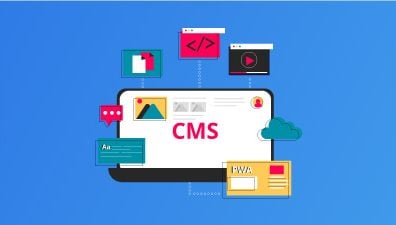Omnichannel optimization is not merely about connecting sales channels; it is about creating a cohesive ecosystem where customers transition effortlessly between platforms. A well-executed omnichannel strategy ensures that customers receive the same level of service and information, whether they are browsing a website, visiting a physical store, or engaging through a mobile app. Companies that excel in omnichannel optimization not only enhance customer satisfaction but also boost operational efficiency, ultimately driving revenue growth and competitive advantage.
The importance of an optimized omnichannel strategy cannot be overstated. In a marketplace crowded with options, businesses must stand out by offering streamlined, personalized experiences that meet customers where they are. Omnichannel optimization empowers organizations to harness real-time data, understand customer behavior, and predict needs with accuracy. It allows businesses to reduce redundancies, ensure inventory accuracy, and enhance fulfillment capabilities, all of which contribute to a more robust and efficient operation. As companies continue to adopt digital transformation initiatives, omnichannel optimization stands as the cornerstone of a successful customer-centric strategy, enabling them to remain agile and responsive to ever-changing demands.
Table of Contents
- Understanding the Basics of Omnichannel Optimization
- Steps to Build an Optimized Omnichannel Strategy
- Case Studies: Successful Omnichannel Optimization
- Tools and Technologies for Omnichannel Optimization
- Metrics to Measure Omnichannel Optimization Success
- Challenges in Omnichannel Optimization
- Common Mistakes to Avoid in Omnichannel Optimization
- Best Practices in Omnichannel Optimization
Understanding the Basics of Omnichannel Optimization
In the fast-paced world of modern commerce, omnichannel optimization has emerged as a critical strategy for businesses striving to deliver exceptional customer experiences. This approach goes beyond simply having multiple sales channels; it focuses on seamlessly integrating these channels to provide a unified and consistent journey for customers. To truly understand the power and potential of omnichannel optimization, it’s essential to break down its definition, key components, and the transformative role of technology in shaping its effectiveness.
What is Omnichannel Optimization?
Omnichannel optimization refers to the strategic alignment and integration of all customer touchpoints—be they online, offline, or mobile—to ensure a cohesive and engaging experience. Unlike traditional multichannel approaches, which often treat channels independently, omnichannel optimization emphasizes interconnectivity. It ensures that customers can transition effortlessly between platforms, such as starting a purchase on a website, checking product availability on a mobile app, and completing the transaction in a physical store.
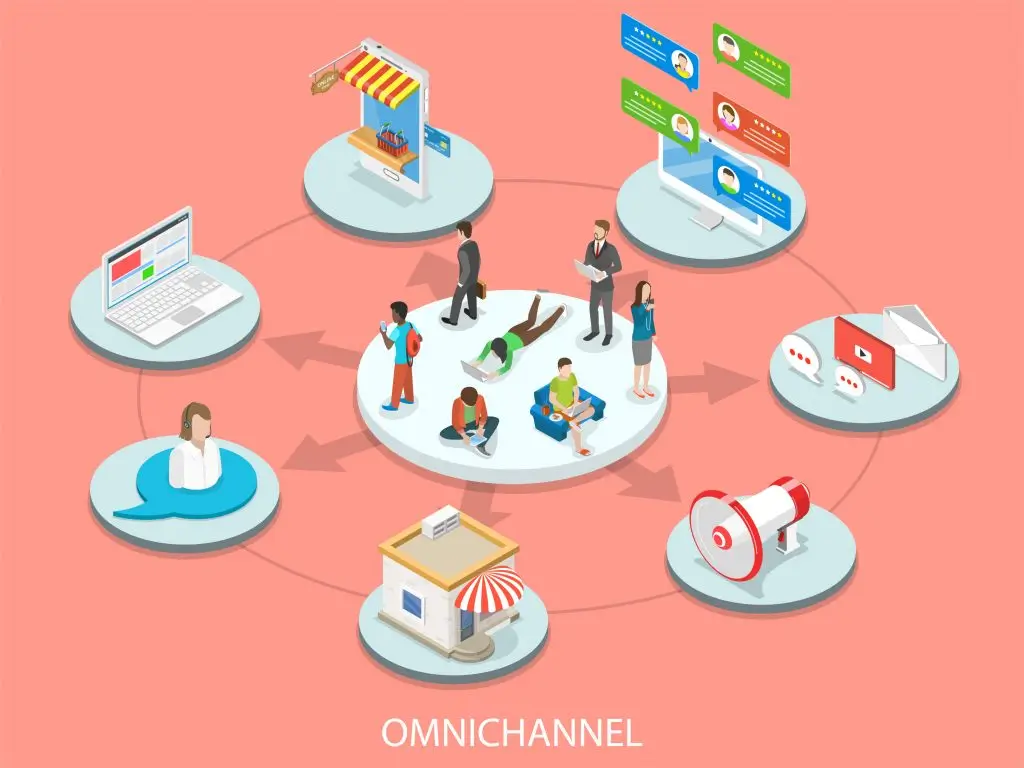
At its core, omnichannel optimization is about creating seamless customer journeys. This means addressing customer needs at every stage of the buying process, from initial research to post-purchase support, without interruption or inconsistency. By synchronizing data and processes across channels, businesses can eliminate common pain points, such as redundant customer queries or inventory mismatches, thereby enhancing satisfaction and loyalty.
Key Components of an Omnichannel Strategy
An optimized omnichannel strategy is built on several key components that work in harmony to deliver a unified customer experience. Each of these components plays a critical role in ensuring the effectiveness of omnichannel optimization.
Channels Involved: Online, Offline, Mobile, Social, and More
Omnichannel optimization revolves around leveraging diverse touchpoints to engage customers wherever they are. These channels include:
- Online: Websites and eCommerce platforms form the backbone of digital engagement, offering product catalogs, reviews, and seamless checkout processes.
- Offline: Physical stores remain vital, serving as hubs for in-person interactions, personalized service, and experiential shopping.
- Mobile: Apps and mobile-optimized sites provide on-the-go convenience, enabling features like product searches, mobile payments, and order tracking.
- Social: Social media platforms enhance engagement by fostering direct communication, running targeted campaigns, and offering integrated shopping experiences.
Integration of Customer Data Across Channels
A cornerstone of omnichannel optimization is the ability to unify customer data from all channels into a single, comprehensive profile. This integration allows businesses to:
- Track customer behavior, preferences, and purchase history across touchpoints.
- Deliver personalized recommendations and offers based on real-time insights.
- Provide consistent and accurate information, such as stock availability and pricing, regardless of the platform.

By breaking down data silos, businesses can gain a holistic understanding of their customers, enabling more informed decision-making and fostering deeper connections.
The Role of Technology in Omnichannel Optimization
Technology is the driving force behind successful omnichannel optimization, enabling businesses to implement and scale their strategies with precision. Without the right tools, achieving seamless integration and personalized experiences would be nearly impossible.
Importance of CRM, ERP, and AI
- Customer Relationship Management: CRMs centralize customer data, making it accessible across departments. This ensures that sales, marketing, and support teams have a unified view of each customer’s journey, enabling tailored interactions.
- Enterprise Resource Planning: ERPs streamline backend operations like inventory management, logistics, and order fulfillment. Integration with omnichannel systems ensures real-time updates, reducing errors and improving efficiency.
- AI: AI enhances omnichannel optimization through predictive analytics, dynamic recommendations, and intelligent chatbots. It enables businesses to anticipate customer needs and deliver proactive solutions.
How Technology Revolutionized Omnichannel Optimization
The advent of advanced technologies has revolutionized the way businesses approach omnichannel optimization. Key advancements include:
- Real-Time Synchronization: Technologies like cloud computing enable instant updates across channels, ensuring customers always have accurate information.
- Automation: Marketing automation tools streamline repetitive tasks like email campaigns and retargeting ads, allowing teams to focus on strategy and creativity.
- Enhanced Analytics: Sophisticated analytics platforms provide actionable insights into customer behavior, helping businesses fine-tune their strategies for greater impact.
By leveraging these technologies, businesses can transform omnichannel optimization from a theoretical goal into a practical reality, delivering exceptional experiences that set them apart from the competition.
Understanding the basics of omnichannel optimization is the first step toward creating a strategy that not only meets but exceeds customer expectations. By defining its principles, identifying its key components, and embracing the role of technology, businesses can unlock the full potential of this transformative approach.
Steps to Build an Optimized Omnichannel Strategy
In an era where customer expectations are rapidly evolving, businesses must prioritize delivering a seamless and cohesive experience across all touchpoints. Omnichannel optimization is the key to meeting these expectations, enabling companies to bridge the gaps between online, offline, mobile, and other channels. However, achieving true omnichannel integration requires more than just a collection of channels—it demands a carefully crafted strategy that ensures every interaction contributes to a consistent and satisfying customer journey.
Omnichannel optimization is not a one-size-fits-all approach. Each business has unique challenges, customer bases, and operational structures that must be considered. The process involves aligning organizational goals with customer needs, leveraging technology to streamline operations, and ensuring that all teams work in harmony toward a shared vision. By taking a strategic approach to omnichannel optimization, businesses can enhance customer satisfaction, improve operational efficiency, and secure a competitive advantage in today’s dynamic marketplace.
Step 1: Define Clear Objectives
Omnichannel optimization thrives on clarity. Without well-defined objectives, businesses risk fragmented efforts and misaligned initiatives. This step is crucial for setting a direction that not only drives customer satisfaction but also supports sustainable business growth.
Set Measurable Goals for Customer Satisfaction and Business Growth
- Identify Specific Outcomes: Establish concrete goals, such as increasing customer retention by 20%, boosting online sales by 30%, or reducing cart abandonment rates by 15%. These benchmarks give your team a clear target to work toward.
- Leverage Customer Satisfaction Metrics: Use tools like Net Promoter Score (NPS), Customer Satisfaction Score (CSAT), and Customer Effort Score (CES) to measure how well your omnichannel optimization efforts resonate with customers. Tracking these metrics provides actionable insights for improvement.
- Integrate Business Growth Indicators: Beyond customer satisfaction, define growth-oriented KPIs such as revenue per customer, cross-channel sales, or the success rate of personalized campaigns. These indicators ensure your omnichannel optimization strategy aligns with profitability goals.
Align Objectives with Overall Business Strategy and Customer Expectations
- Connect Objectives to Broader Business Goals: Whether it’s market expansion, operational efficiency, or enhancing brand loyalty, ensure that your omnichannel optimization strategy directly supports your company’s vision. For instance, a retail business focusing on global expansion might prioritize real-time inventory updates across all channels to streamline international operations.
- Understand Customer Expectations: Conduct surveys, focus groups, and data analysis to uncover what your customers value most in their interactions with your brand. Are they looking for faster delivery, personalized recommendations, or smoother transitions between online and offline channels? Tailor your objectives to address these needs.
- Create a Unified Vision: Ensure that all departments—marketing, sales, customer service, and IT—are aligned with the goals of your omnichannel optimization strategy. A cohesive approach minimizes silos and maximizes efficiency.
Why Defining Objectives is Critical for Omnichannel Optimization
Clear objectives serve as the foundation for every decision you make in your omnichannel optimization journey. They provide a roadmap that guides investments in technology, staff training, and process improvements. By ensuring that your goals are both measurable and aligned with broader business and customer needs, you create a focused, efficient strategy that delivers consistent results.

Defining objectives is not a one-time task. As your business evolves, customer behaviors shift, and market conditions change, revisiting and refining your goals ensures that your omnichannel optimization efforts remain relevant and impactful. By starting with this foundational step, you set the stage for a strategy that not only meets but exceeds customer expectations while driving measurable business success.
Step 2: Audit Existing Channels and Processes
An audit provides a comprehensive understanding of how your channels and processes contribute to the overall customer journey. Omnichannel optimization requires the elimination of silos, inefficiencies, and inconsistencies to ensure customers receive the same level of service and experience, regardless of the channel they choose.
Map the Current Customer Journey to Identify Gaps
Mapping the customer journey is a cornerstone of omnichannel optimization. It allows businesses to visualize how customers interact with different channels and uncover areas where improvements are needed.
- Outline Key Touchpoints: Start by identifying all the ways customers engage with your brand, such as website visits, social media interactions, in-store experiences, or mobile app usage. Each touchpoint should be clearly defined and documented.
- Assess Customer Pain Points: Analyze feedback, complaints, and behavioral data to identify areas where customers face challenges. For example, are customers abandoning their carts due to a complicated checkout process, or are they unable to transition seamlessly from online browsing to in-store purchases?
- Examine Cross-Channel Transitions: Evaluate how smoothly customers move between channels. Are there barriers that disrupt their journey, such as inconsistent pricing or inventory information? Mapping these transitions highlights where omnichannel optimization can create a more fluid experience.
By mapping the customer journey, businesses gain a clearer picture of their current strengths and weaknesses, enabling targeted improvements that enhance customer satisfaction.
Analyze the Performance of Individual Channels for Inefficiencies
A critical part of omnichannel optimization is understanding how each channel performs independently and in conjunction with others. This analysis ensures that no channel undermines the overall strategy.
- Evaluate Key Metrics for Each Channel: Use metrics such as conversion rates, bounce rates, and average time spent to gauge the effectiveness of your website, mobile app, physical stores, and social media platforms. Low-performing metrics may indicate areas where adjustments are needed.
- Assess Operational Efficiency: Review how well each channel operates behind the scenes. For example, is inventory information up-to-date on your website, or are customers frequently encountering stockouts? Are shipping times meeting expectations, or are delays causing dissatisfaction?
- Identify Redundancies and Overlaps: Look for duplications in your processes that may waste resources or confuse customers. For instance, having separate systems for online and offline inventory can lead to discrepancies and inefficiencies.
The Importance of Auditing for Omnichannel Optimization
Auditing your existing channels and processes is essential for laying the groundwork for omnichannel optimization. It provides the insights needed to align your strategy with customer expectations and business goals. Without a thorough audit, it’s easy to overlook inefficiencies that hinder performance or fail to recognize gaps in the customer journey that diminish satisfaction.

By systematically mapping customer interactions and evaluating channel performance, businesses can identify actionable steps to streamline operations and improve the overall experience. This process not only enhances the effectiveness of individual channels but also strengthens their integration, creating a unified and optimized omnichannel strategy.
Regular audits are also key to maintaining the effectiveness of omnichannel optimization over time. As technology evolves and customer behaviors change, periodic reviews ensure your strategy remains agile and capable of delivering the seamless experiences customers expect.
Step 3: Centralize Customer Data
The modern customer journey spans multiple channels and touchpoints, making it essential to consolidate data into a single, comprehensive source. Centralizing customer data supports omnichannel optimization by enabling businesses to understand customer behaviors, preferences, and needs holistically. This foundation enhances not only the customer experience but also operational efficiency.
Establish a Single Source of Truth for Customer Information
A single source of truth ensures that all customer data is stored, updated, and accessed in one central system, eliminating inconsistencies and reducing redundancies.
- Integrate Data from All Channels: Consolidate information from various touchpoints, including websites, mobile apps, social media, physical stores, and customer service interactions. This integration ensures that every team has a unified view of customer activity. For example, a customer’s online browsing history can inform in-store recommendations, while in-store purchases can trigger follow-up emails or loyalty rewards.
- Streamline Data Management Systems: Use tools like customer relationship management (CRM) platforms or data warehouses to aggregate and organize customer data. These systems act as the central hub for omnichannel optimization, providing a clear, accessible record of every customer interaction.
- Eliminate Data Silos: Break down barriers between departments or platforms that may store customer information independently. For example, ensure that marketing, sales, and customer service teams all access and update the same customer profiles. This prevents errors, such as offering redundant promotions or failing to recognize loyal customers.

Centralizing customer data not only simplifies operations but also enhances the ability to provide consistent and personalized experiences across all channels.
Ensure Secure and Real-Time Access to Data Across Teams
Omnichannel optimization relies on the ability to access and utilize data in real time, enabling immediate responses to customer actions and inquiries. At the same time, businesses must maintain stringent security measures to protect sensitive information.
- Enable Real-Time Data Sharing: Use cloud-based systems to ensure that customer data is updated and available to all teams in real time. For example, when a customer purchases an item in-store, their online profile should immediately reflect this transaction, updating available loyalty points and triggering personalized recommendations.
- Promote Cross-Department Collaboration: Equip marketing, sales, logistics, and support teams with tools that provide secure, shared access to customer data. This collaboration ensures that every interaction reflects the most current information, reducing inconsistencies and enhancing customer satisfaction.
- Prioritize Data Security: Implement robust security protocols, such as encryption and multi-factor authentication, to protect customer data. Compliance with regulations like GDPR or CCPA is essential to maintain customer trust and avoid legal repercussions. Businesses should regularly audit their systems to identify vulnerabilities and ensure data integrity.

Real-time, secure access to centralized customer data empowers teams to make informed decisions and respond proactively to customer needs, driving the success of omnichannel optimization.
The Impact of Centralizing Customer Data on Omnichannel Optimization
Centralizing customer data is a critical step in achieving omnichannel optimization. It creates a foundation for consistent and personalized interactions, ensuring that customers receive relevant information and offers no matter which channel they use. This approach eliminates inefficiencies caused by fragmented data and fosters a deeper understanding of customer behavior, enabling businesses to anticipate needs and exceed expectations.
By establishing a single source of truth and ensuring secure, real-time access to data, companies can streamline their operations, improve communication between teams, and deliver a seamless experience that sets them apart in a competitive market. As customer journeys become increasingly complex, the ability to centralize and leverage data will remain a cornerstone of effective omnichannel optimization.
Step 4: Enhance Personalization
Personalization is more than just addressing customers by name; it’s about creating meaningful, relevant experiences that resonate with their unique preferences and behaviors. Omnichannel optimization allows businesses to unify data from multiple channels, enabling them to deliver consistent, tailored interactions at every touchpoint.
Use Machine Learning for Dynamic Product Recommendations
Machine learning plays a pivotal role in omnichannel optimization by analyzing vast amounts of customer data to generate accurate, real-time recommendations.
- Leverage Behavioral Data for Precision: Machine learning algorithms analyze customer behavior, such as browsing history, past purchases, and search queries, to understand preferences and predict future actions. For instance, an eCommerce platform can use this information to recommend complementary products, like a matching case for a laptop purchase, enhancing the customer experience.
- Adapt Recommendations Across Channels: Omnichannel optimization ensures that personalized recommendations are consistent across all platforms. For example, a product added to a customer’s wishlist on a mobile app can trigger related suggestions on their desktop or in-store interactions. This seamless experience reinforces brand loyalty and improves conversion rates.
- Refine Accuracy Over Time: Machine learning models continuously improve as they process more data. This iterative approach ensures that recommendations become increasingly relevant, driving higher engagement and sales.

By using machine learning to deliver dynamic recommendations, businesses can enhance personalization, boost customer satisfaction, and maximize revenue opportunities.
Tailor Marketing Campaigns to Customer Preferences and Behaviors
Personalized marketing campaigns are a crucial aspect of omnichannel optimization, as they allow businesses to connect with customers on a deeper level.
- Segment Audiences Based on Insights: Omnichannel optimization enables businesses to segment customers into precise groups based on demographics, purchasing habits, and engagement history. This segmentation ensures that marketing campaigns are highly targeted, increasing their effectiveness. For example, a fashion retailer can promote winter clothing to customers in colder regions while highlighting summer collections to those in warmer climates.
- Deliver Real-Time, Contextual Messaging: By leveraging data and automation, businesses can send timely, context-aware messages that align with customer actions. For instance, if a customer abandons their cart online, an automated email offering a discount or reminding them of the item can encourage them to complete the purchase.
- Incorporate Multichannel Consistency: Omnichannel optimization ensures that marketing messages are aligned across all platforms. Whether a customer interacts with an email, a social media ad, or an in-store promotion, the messaging should be consistent and relevant. This consistency reinforces the brand’s identity and builds trust.
Tailored marketing campaigns not only improve customer engagement but also strengthen relationships, fostering loyalty and repeat business.
The Role of Personalization in Omnichannel Optimization
Enhancing personalization is a vital step in omnichannel optimization, as it transforms generic interactions into meaningful experiences that drive customer satisfaction and loyalty. By harnessing the power of machine learning and data-driven marketing, businesses can anticipate customer needs, offer relevant solutions, and create seamless interactions across all channels.
Personalization also has a direct impact on business performance. Customers who feel understood and valued are more likely to engage with a brand, make repeat purchases, and recommend the company to others. As a result, businesses that prioritize personalization as part of their omnichannel optimization strategy gain a significant competitive advantage.
Incorporating advanced personalization techniques ensures that every touchpoint contributes to a cohesive and customer-centric experience, setting the stage for long-term success in today’s dynamic market.
Step 5: Foster Collaboration Between Teams
Collaboration is the backbone of omnichannel optimization. By aligning teams around shared goals and fostering a culture of communication and cooperation, businesses can eliminate inefficiencies, improve customer satisfaction, and ensure that every touchpoint delivers value.
Break Down Silos Between Marketing, Sales, and Customer Service
In many organizations, marketing, sales, and customer service operate as separate entities with their own objectives and processes. This siloed approach creates barriers to achieving true omnichannel optimization.
- Create Unified Goals: Align all teams around the central goal of delivering exceptional customer experiences. For example, marketing’s role might be to attract customers, sales focuses on conversion, and customer service ensures satisfaction post-purchase. Omnichannel optimization bridges these roles to create a seamless journey for the customer.
- Implement Integrated Tools and Systems: Use platforms like customer relationship management (CRM) software to provide a shared view of customer data. When marketing knows what products a customer has purchased, sales can recommend relevant upsells, and customer service can offer tailored support.
- Encourage Open Communication: Establish regular cross-departmental meetings to discuss challenges, share insights, and align strategies. For instance, marketing might share data on successful campaigns, while customer service highlights common pain points, enabling sales to adapt their approach accordingly.
Breaking down silos not only improves operational efficiency but also ensures that customers experience consistent and personalized interactions across all channels.
Encourage Cross-Department Training and Shared KPIs
For omnichannel optimization to succeed, all teams must understand their interdependence and work toward common objectives. Cross-department training and shared KPIs help build this unified approach.
- Provide Cross-Functional Training: Equip employees with knowledge of other departments’ roles and responsibilities. For instance, training customer service agents on marketing campaigns or sales strategies can enhance their ability to address customer inquiries effectively. Similarly, marketing teams can benefit from understanding frontline customer feedback to refine their messaging.
- Establish Shared KPIs: Develop key performance indicators (KPIs) that reflect the success of the omnichannel optimization strategy as a whole. Examples include customer satisfaction scores, Net Promoter Scores (NPS), or conversion rates across all channels. Shared KPIs encourage teams to focus on collaborative success rather than isolated achievements.
- Reward Collaborative Efforts: Recognize and incentivize teamwork that contributes to omnichannel optimization goals. This could involve celebrating milestones, such as the successful integration of a new channel, or rewarding teams that collectively improve customer satisfaction metrics.

Cross-department training and shared KPIs ensure that every team understands their role in the larger strategy and works collaboratively to achieve shared goals.
The Role of Collaboration in Omnichannel Optimization
Fostering collaboration between teams is essential for omnichannel optimization because it creates a unified approach to meeting customer needs. When teams work together seamlessly, they can anticipate challenges, adapt strategies in real time, and deliver consistent experiences across channels.
Collaboration also leads to more efficient operations. With shared tools, data, and goals, businesses can eliminate duplication of effort, resolve issues more quickly, and make better-informed decisions. Ultimately, this results in a superior customer experience, stronger brand loyalty, and improved business performance.
By breaking down silos and encouraging cross-departmental collaboration, businesses lay the groundwork for a successful omnichannel optimization strategy that benefits both the organization and its customers. This step ensures that every team contributes to a cohesive and customer-centric approach, driving sustainable growth in an increasingly competitive market.
Step 6: Invest in the Right Technology
Choosing and implementing the right technological solutions is essential for achieving omnichannel optimization. These tools enable businesses to unify operations, streamline processes, and respond to customer needs in real time. The focus should be on selecting platforms that integrate well with existing systems and offer scalability to adapt to evolving business requirements.
Choose Platforms That Integrate Well with Existing Systems
One of the primary challenges in omnichannel optimization is integrating disparate systems and ensuring they work together harmoniously. Selecting the right platforms can bridge these gaps and create a unified operational framework.
- Prioritize Interoperability: Look for tools and platforms that can seamlessly connect with your existing systems, such as CRM, ERP, and marketing automation software. For example, integrating a CRM system with an eCommerce platform allows for real-time updates on customer interactions, ensuring consistency across online and offline channels.
- Facilitate Real-Time Data Sharing: Opt for cloud-based solutions that enable instantaneous data synchronization between systems. This ensures that inventory levels, customer profiles, and order statuses are always up to date across all channels, a critical aspect of omnichannel optimization.
- Ensure User-Friendly Integration: Complex integrations can lead to delays and inefficiencies. Choose platforms with robust APIs and user-friendly interfaces that simplify the process of connecting various tools and systems.

By selecting technology that integrates seamlessly with existing systems, businesses can eliminate data silos and create a cohesive environment that supports omnichannel optimization.
Focus on Tools That Enable Scalability and Adaptability
As businesses grow and customer expectations evolve, the technology supporting omnichannel optimization must be able to scale and adapt to new challenges. Investing in flexible, future-proof tools is essential for long-term success.
- Choose Scalable Solutions: Invest in platforms that can handle increasing volumes of data, transactions, and users as your business expands. For example, a scalable order management system can support higher transaction volumes during peak seasons without compromising performance.
- Adopt Adaptive Technologies: Focus on tools that can evolve with your business needs, such as artificial intelligence (AI) and machine learning capabilities. These technologies can adapt to changing customer behaviors, enabling dynamic personalization and predictive analytics.
- Plan for Emerging Trends: Consider how future advancements, such as augmented reality (AR), virtual reality (VR), and Internet of Things (IoT) integrations, might impact your omnichannel optimization efforts. Investing in adaptable technology ensures your business can leverage these innovations when they become relevant.
Scalable and adaptable tools provide the flexibility needed to navigate market changes, customer demands, and technological advancements, ensuring your omnichannel strategy remains effective over time.
The Role of Technology in Omnichannel Optimization
Investing in the right technology is crucial for unlocking the full potential of omnichannel optimization. It empowers businesses to integrate their operations, provide personalized experiences, and maintain agility in a dynamic market. Technology acts as the glue that binds channels together, enabling a unified approach that enhances customer satisfaction and operational efficiency.

Moreover, the right tools help businesses achieve cost-efficiency by automating repetitive tasks, minimizing errors, and optimizing resources. As customer expectations continue to rise, technology will remain a driving force behind successful omnichannel optimization, ensuring businesses can meet and exceed these demands while staying competitive.
By choosing platforms that integrate seamlessly with existing systems and focusing on tools that offer scalability and adaptability, businesses can build a robust technological foundation for omnichannel optimization. This foundation not only supports current operations but also prepares businesses for future growth and innovation, making it a vital component of a comprehensive omnichannel strategy.
Step 7: Monitor and Optimize Continuously
A successful omnichannel strategy is not a static framework; it is a dynamic process that evolves based on performance data and customer feedback. By tracking key metrics and experimenting with improvements, businesses can refine their approach, maximize customer satisfaction, and enhance operational efficiency.
Track Metrics Like Conversion Rates and Customer Satisfaction
Effective omnichannel optimization relies on data-driven decision-making. Tracking relevant metrics allows businesses to identify strengths, weaknesses, and opportunities for improvement.
- Monitor Conversion Rates Across Channels: Analyze the performance of individual channels and their impact on overall conversion rates. For example, track how well a website’s product pages convert visitors into buyers, or measure the effectiveness of in-store promotions in driving purchases. Understanding these metrics helps allocate resources to the most impactful areas.
- Evaluate Customer Satisfaction Scores: Metrics like Net Promoter Score (NPS), Customer Satisfaction Score (CSAT), and Customer Effort Score (CES) provide insights into how well your omnichannel optimization efforts resonate with customers. Regularly reviewing these scores ensures that customer needs are consistently met.
- Assess Cross-Channel Engagement: Use data to understand how customers interact with multiple touchpoints. For instance, measure the percentage of customers who use multiple channels during their journey and identify any drop-off points that hinder seamless transitions.

Tracking these metrics ensures that businesses have a clear understanding of their omnichannel strategy’s performance and can make informed decisions to improve outcomes.
Implement A/B Testing for Ongoing Improvement
A/B testing is a powerful tool for refining omnichannel optimization efforts. By testing different variations of elements within your strategy, businesses can determine what resonates most effectively with customers.
- Test Content and Messaging: Experiment with variations in email subject lines, product descriptions, or ad copy to identify what drives higher engagement and conversions. For example, A/B testing personalized email campaigns can reveal which level of personalization yields the best results.
- Optimize User Interfaces: Use A/B testing to refine the design and functionality of digital interfaces, such as websites and mobile apps. Testing changes like the placement of call-to-action buttons or the layout of product pages can significantly impact usability and conversions.
- Evaluate Fulfillment and Delivery Options: Experiment with different shipping options, return policies, or pickup methods to determine which approach aligns best with customer preferences. For instance, testing the impact of free shipping versus discounted shipping rates can provide valuable insights into customer behavior.
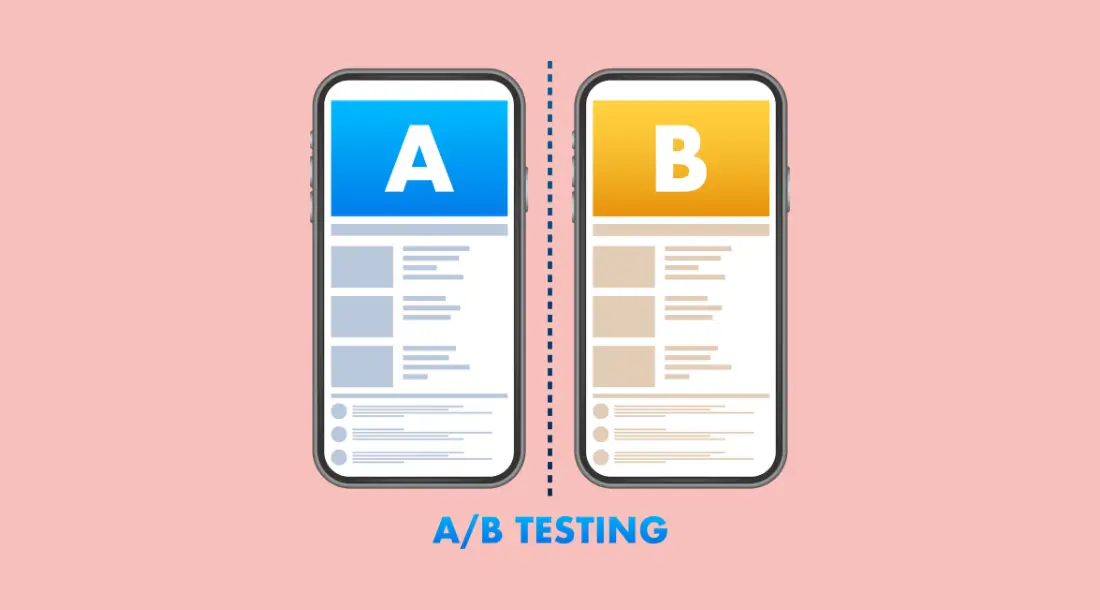
A/B testing enables businesses to make incremental improvements that collectively enhance the overall effectiveness of their omnichannel optimization strategy.
The Importance of Continuous Monitoring and Optimization
Continuous monitoring and optimization are essential for keeping pace with changing customer expectations, technological advancements, and market dynamics. By regularly tracking metrics and conducting A/B tests, businesses can uncover valuable insights and adapt their strategies to maintain a competitive edge.
This iterative approach ensures that businesses are not only addressing current challenges but also proactively preparing for future opportunities. It enables organizations to deliver consistent, high-quality experiences across all channels, fostering customer loyalty and driving long-term growth.
Omnichannel optimization is a journey, not a destination. By committing to continuous improvement, businesses can build a strategy that evolves alongside their customers, ensuring sustained success in an ever-changing market landscape. Through rigorous monitoring and testing, organizations can refine their approach and deliver exceptional experiences that set them apart.
Case Studies: Successful Omnichannel Optimization
Omnichannel optimization has proven to be a game-changing strategy for businesses aiming to stay competitive in today’s dynamic market. By seamlessly integrating multiple channels, leading brands have transformed the way they engage with customers, delivering personalized experiences and ensuring consistent service across touchpoints. These success stories offer valuable lessons for businesses looking to enhance their own omnichannel strategies. Below, we delve into detailed case studies showcasing how prominent companies have implemented omnichannel optimization to achieve significant business growth and customer satisfaction.
Case Study 1: IKEA
IKEA, the globally renowned home furnishings retailer, has consistently prioritized customer-centric innovation. Known for its vast product catalog and immersive in-store experience, IKEA caters to a diverse customer base seeking affordable yet stylish furniture. However, as digital transformation reshaped consumer behavior, IKEA recognized the need to evolve its customer journey. Customers were increasingly researching and planning purchases online before visiting physical stores, and IKEA sought to ensure these transitions between channels were seamless.

The company’s challenge lay in bridging the gap between its digital and physical touchpoints. IKEA’s goal was to implement omnichannel optimization strategies that would enable customers to interact with the brand effortlessly, regardless of whether they were browsing online, using a mobile app, or visiting a store.
Omnichannel Optimizations
IKEA implemented a series of targeted omnichannel optimizations to address customer needs and create a seamless shopping experience. One of their standout initiatives was the launch of the IKEA Place app. This app uses augmented reality (AR) technology to solve a common challenge for furniture buyers: visualizing how a product will look and fit in their home. Customers can virtually place IKEA furniture in their living spaces using their smartphones, eliminating uncertainty and enabling more confident purchasing decisions. Additionally, the app is integrated with IKEA’s online catalog, allowing users to easily add AR-tested products to their shopping carts or reserve them for in-store pickup.
To further enhance their omnichannel strategy, IKEA optimized the integration of online and offline channels. Customers could use the IKEA mobile app or website to check real-time stock availability at their chosen store, ensuring they could plan their shopping trips effectively. The in-store experience was also improved with the addition of digital wayfinding tools, which helped customers navigate the warehouse-style layout and locate specific items quickly and efficiently. These innovations collectively bridged the gap between digital and physical interactions, elevating IKEA’s ability to deliver a unified and engaging customer journey.
Analysis and Evaluation
IKEA’s approach to omnichannel optimization yielded significant benefits, both for the company and its customers. The introduction of the IKEA Place app bridged the gap between online browsing and in-store shopping, particularly for tech-savvy, mobile-first customers. By reducing purchase hesitation, the app encouraged more confident decision-making, while the real-time stock availability and wayfinding tools streamlined the shopping process, saving customers valuable time and effort. These features not only enhanced customer satisfaction but also strengthened engagement.
IKEA’s commitment to prioritizing customer needs also bolstered its brand loyalty. By offering innovative tools like AR-based visualization and seamless online-offline integration, the company reinforced its reputation as a customer-centric retailer. These efforts attracted new customers while cultivating stronger loyalty among existing ones.
From an operational perspective, IKEA’s omnichannel optimizations drove tangible improvements in efficiency and revenue growth. The AR app and integrated shopping tools reduced cart abandonment rates and encouraged purposeful in-store visits. Real-time inventory management ensured better stock control, minimizing out-of-stock situations and lost sales opportunities. IKEA’s case serves as a benchmark in the retail industry, showcasing how effective omnichannel optimization can transform the customer experience and deliver measurable business success.
Case Study 2: Target
Target, one of the largest retail chains in the United States, has long been recognized for its commitment to providing an exceptional customer experience. With its expansive network of physical stores and a growing eCommerce platform, Target faced the challenge of seamlessly integrating its digital and in-store channels. The retail giant sought to implement omnichannel optimization strategies that would cater to the modern shopper’s need for convenience, personalization, and efficiency.
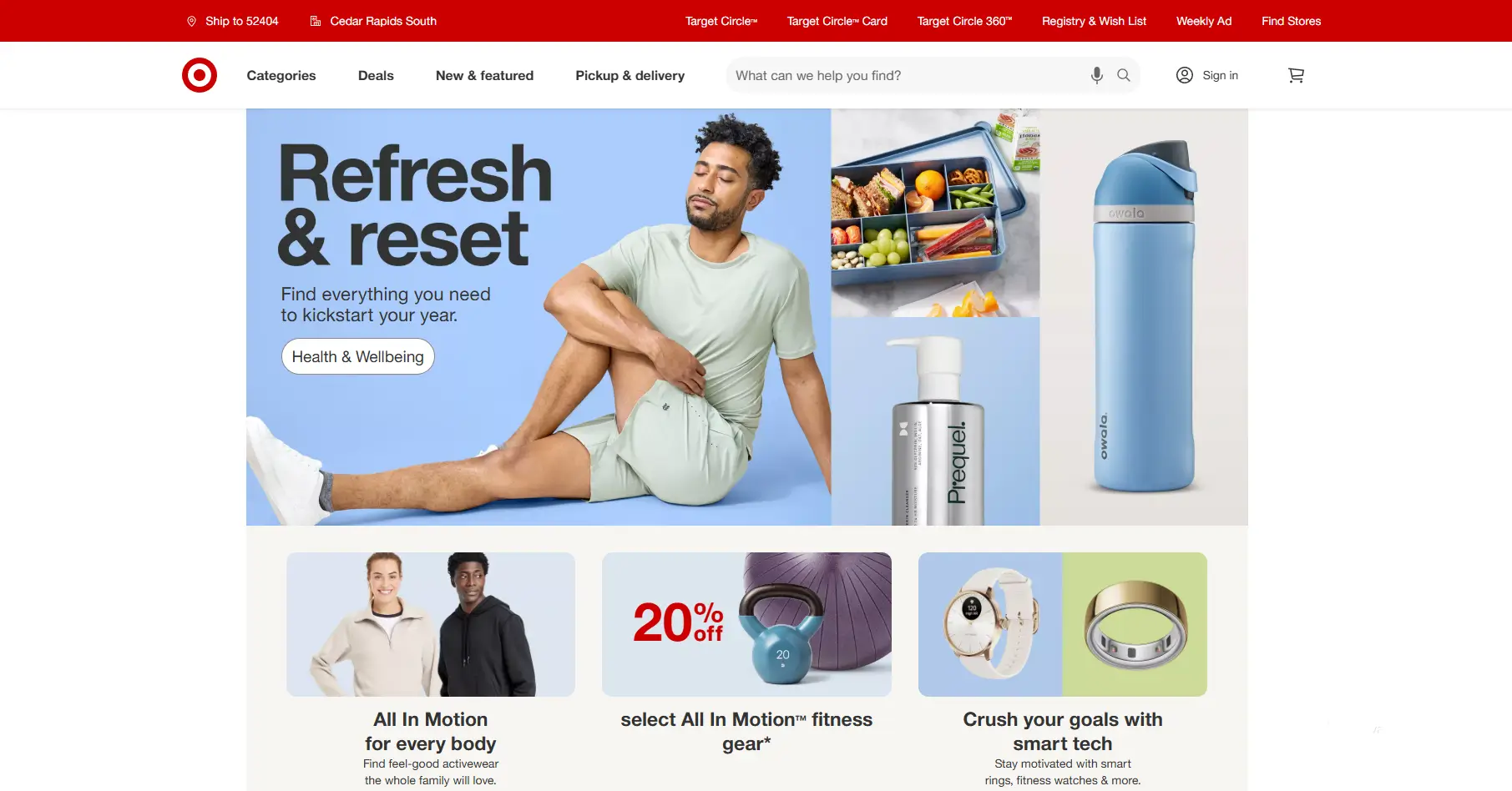
As consumer behavior shifted toward online shopping with a preference for flexible fulfillment options, Target identified key opportunities to innovate its operations. The goal was to merge its digital and physical assets into a cohesive ecosystem, ensuring customers could shop their way—whether online, in-store, or a combination of both.
Omnichannel Optimizations
Target implemented several impactful strategies as part of its omnichannel optimization efforts to enhance customer experience and streamline operations. One notable initiative was the introduction of the “Drive Up” service, designed to provide customers with a convenient and contactless way to pick up online orders. Through this service, customers could place orders via the Target mobile app or website and select curbside pickup at their nearest store. Upon arrival, Target employees would deliver the order directly to the customer’s vehicle, eliminating the need to enter the store. This service gained immense popularity during the pandemic, addressing safety concerns while catering to busy shoppers who valued time-saving solutions.
Another critical component of Target’s omnichannel optimization was the advanced use of data analytics to predict customer needs and optimize inventory across its extensive store network. Leveraging sophisticated analytics tools, Target gained insights into customer preferences and shopping habits. These insights were used to optimize inventory placement, ensuring high-demand products were always available in the right locations. For example, popular seasonal items and region-specific products were stocked based on local demand patterns, reducing stockouts and enhancing customer satisfaction. Additionally, data analytics informed personalized marketing campaigns, enabling Target to offer tailored promotions and recommendations based on customer purchase histories, further enriching the shopping experience.
Analysis and Evaluation
Target’s strategic focus on omnichannel optimization resulted in substantial benefits for both the company and its customers. The “Drive Up” service significantly improved customer satisfaction by offering unparalleled convenience, particularly for time-pressed shoppers and those seeking contactless fulfillment options. This seamless and efficient service bolstered Target’s reputation as a customer-first retailer. Personalized marketing campaigns, powered by data analytics, created a more engaging shopping experience, fostering loyalty among a diverse customer base.
From an operational perspective, predictive inventory management minimized stockouts and reduced overstocking, allowing Target to optimize store space and supply chain resources. Streamlined fulfillment processes, guided by data-driven insights, enhanced the accuracy and speed of order processing, resulting in cost savings and improved efficiency.
Target’s ability to blend digital and physical channels seamlessly positioned the retailer as a market leader. The success of the “Drive Up” service and inventory optimization strategies allowed Target to capture a larger market share, appealing to both online shoppers and in-store visitors. These initiatives also gave Target a competitive edge against eCommerce giants like Amazon and Walmart, solidifying its standing in the retail industry.
This case study illustrates how Target’s thoughtful implementation of omnichannel optimization strategies, including innovative fulfillment services and data-driven decision-making, can lead to long-term growth, enhanced operational efficiency, and stronger customer loyalty.
Case Study 3: Disney
Disney, a global leader in entertainment and theme parks, has long been recognized for its exceptional customer experiences. With millions of visitors annually across its parks and resorts, Disney’s challenge was to integrate its digital and physical touchpoints into a cohesive, seamless journey. As customer expectations evolved with advancements in technology, Disney sought to enhance its operations by adopting an omnichannel optimization approach. The aim was to ensure that guests could plan their trips, navigate the parks, and enjoy their visits without interruptions, regardless of the channels they used.
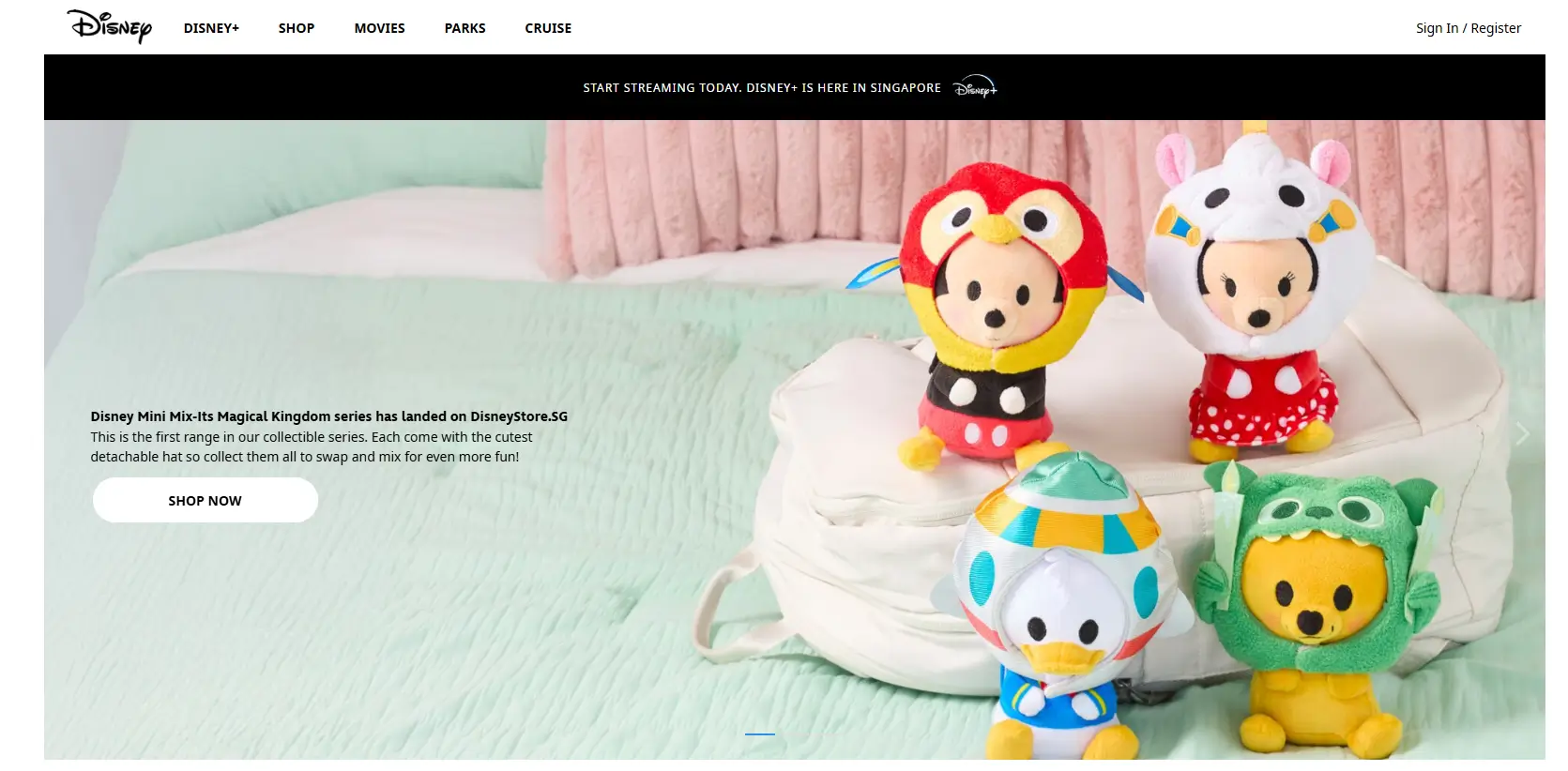
Understanding that modern guests value convenience, personalization, and seamless interactions, Disney invested heavily in creating tools and technologies that bridged the gap between online planning and in-park experiences. This strategic focus not only elevated customer satisfaction but also streamlined park operations, reinforcing Disney’s position as a leader in experiential innovation.
Omnichannel Optimizations
Disney implemented a range of innovative strategies to achieve omnichannel optimization, ensuring guests could enjoy a unified and engaging experience throughout their journey. One of the most notable initiatives was the introduction of the My Disney Experience app, designed to act as a central hub for planning and navigating park visits. This app enabled guests to book tickets, reserve dining, schedule rides with FastPass+, and view real-time wait times for attractions. By integrating pre-visit planning with on-site navigation, the app ensured seamless transitions from digital interactions to physical experiences. For instance, families could pre-book popular rides and dining spots before their trip and use the app for step-by-step guidance within the park. Centralizing these functions eliminated common pain points such as long wait times and confusion about park layouts, significantly enhancing convenience and customer satisfaction.
Another pivotal innovation was the introduction of MagicBands, wearable devices that blended physical and digital experiences seamlessly. These bands served multiple purposes, including park entry, hotel room access, ride reservations, merchandise purchases, and dining payments. Synchronized with the My Disney Experience app, MagicBands created a seamless flow of information between digital and physical touchpoints. For example, a guest’s ride reservation made on the app was instantly recognized by their MagicBand, streamlining entry processes and enhancing the overall experience. MagicBands also enabled personalized interactions, such as greeting guests by name or offering tailored recommendations based on their activities.
These omnichannel optimizations effectively bridged digital convenience with physical immersion, setting a new standard for experiential customer journeys and reinforcing Disney’s reputation as an industry leader in innovation.
Analysis and Evaluation
Disney’s commitment to omnichannel optimization delivered transformative results for both the company and its guests. The My Disney Experience app became a vital tool for enhancing convenience and personalization, empowering guests to take control of their visits. By centralizing trip planning and in-park navigation, the app eliminated inefficiencies and improved the overall guest experience, fostering greater satisfaction and loyalty.
MagicBands further elevated this experience by blending digital capabilities with physical convenience. Guests no longer needed to carry tickets, cash, or room keys, as the wearable device handled multiple functions seamlessly. This innovation not only improved operational efficiency but also created memorable, frictionless interactions that guests appreciated.
From an operational standpoint, Disney’s omnichannel optimization efforts streamlined park management and increased revenue. The integration of digital tools and wearable technology enabled more efficient crowd control, reduced wait times, and encouraged greater spending through easy-to-use payment features.
Overall, Disney’s omnichannel optimization strategy highlights the power of combining cutting-edge technology with customer-centric design. By ensuring that every touchpoint—from planning to in-park experiences—was interconnected and seamless, Disney solidified its reputation as an industry leader in innovation. This case study demonstrates how omnichannel optimization can transform traditional customer journeys into dynamic, personalized experiences that drive satisfaction and loyalty.
Case Study 4: Tesco
Tesco, one of the largest supermarket chains in the world, has consistently been at the forefront of retail innovation. With a massive customer base spanning physical stores and online platforms, Tesco recognized the growing importance of omnichannel optimization in meeting evolving consumer demands. As customer behaviors shifted toward digital convenience and seamless shopping experiences, Tesco sought to integrate its in-store and online offerings into a cohesive ecosystem.
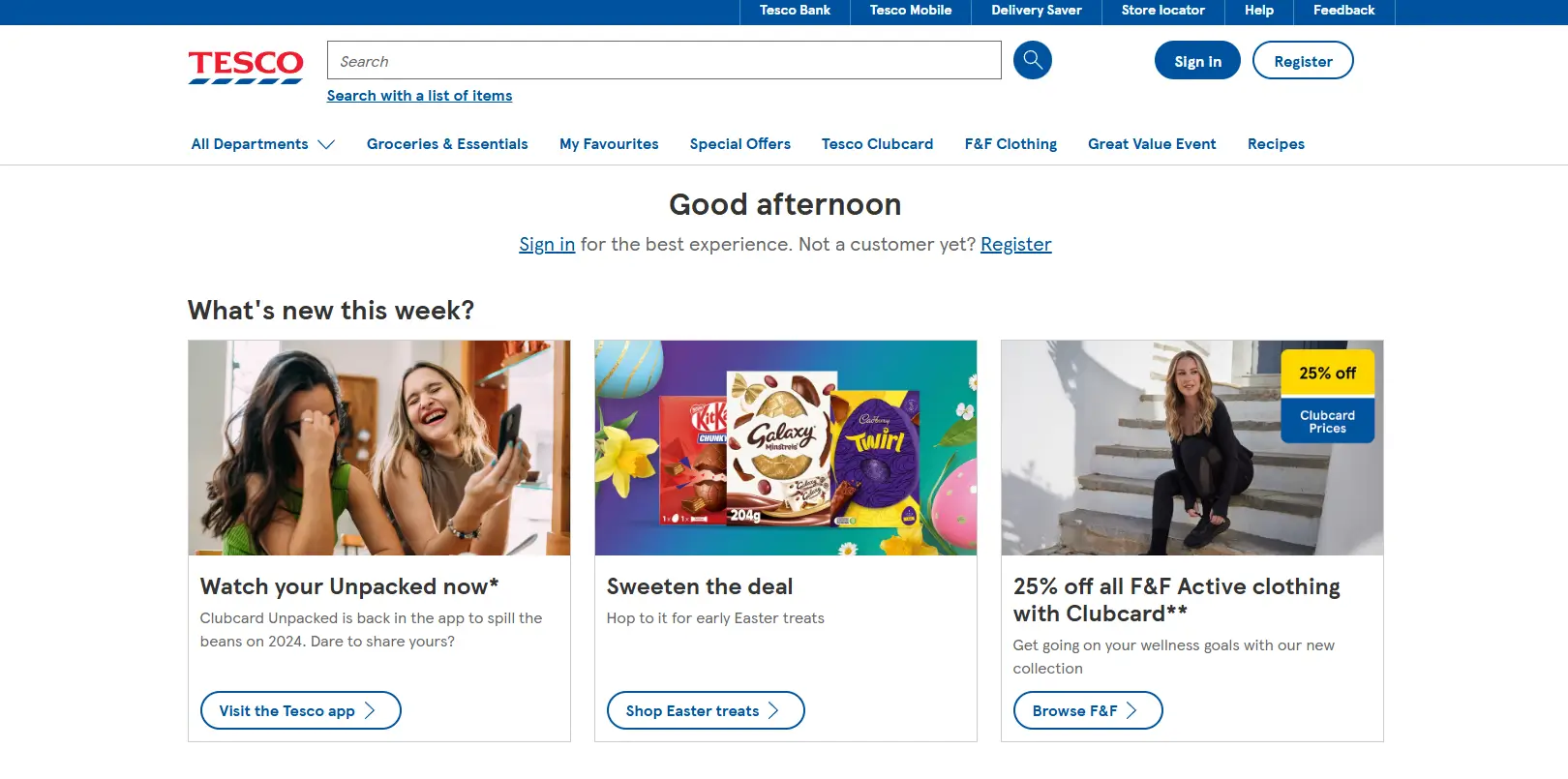
The challenge for Tesco was to ensure that customers could transition effortlessly between shopping channels, whether browsing products online, using a mobile app, or visiting a store. The company’s goal was to create a frictionless experience that prioritized convenience, personalization, and accessibility, enabling customers to shop how and when they wanted.
Omnichannel Optimizations
Tesco implemented several groundbreaking strategies as part of its commitment to omnichannel optimization, fundamentally transforming the grocery shopping experience for its customers.
One of Tesco’s most significant initiatives was pioneering its “click and collect” service. This service allowed customers to order groceries online and pick them up at a nearby Tesco store at their convenience. By eliminating the need to browse aisles or wait in checkout lines, the “click and collect” service catered to busy customers who valued time efficiency. Tesco further enhanced the service by offering flexible pickup options, including dedicated collection points and even drive-through facilities. This innovation bridged the gap between online convenience and in-store fulfillment, ensuring a seamless and frictionless experience for shoppers.
In addition to “click and collect,” Tesco launched a comprehensive mobile app to enhance customer engagement and streamline the shopping process. The app provided real-time stock updates, allowing customers to check product availability before visiting a store or placing an online order. This feature reduced frustration caused by out-of-stock items and helped customers plan their purchases more effectively. Moreover, the app offered personalized promotions and discounts based on customers’ purchase histories and preferences. For instance, frequent buyers of a particular brand of coffee might receive targeted offers or loyalty rewards, enhancing the sense of personalization and customer value.
These omnichannel optimizations demonstrated Tesco’s ability to innovate and adapt, delivering a unified and customer-centric shopping experience.
Analysis and Evaluation
Tesco’s commitment to omnichannel optimization delivered significant benefits, strengthening its competitive position and enhancing customer satisfaction.
The “click and collect” service redefined convenience in grocery shopping. By combining the ease of online ordering with the immediacy of in-store pickup, Tesco addressed the needs of time-pressed customers while maintaining foot traffic in its stores. This service also proved invaluable during the COVID-19 pandemic, when customers increasingly sought contactless shopping options. Tesco’s flexible collection points and drive-through facilities further underscored its dedication to meeting diverse customer needs.
The launch of Tesco’s mobile app elevated the shopping experience by providing real-time information and personalized engagement. Real-time stock updates empowered customers to make informed decisions, reducing the likelihood of dissatisfaction from unavailable products. Personalized promotions not only enhanced customer loyalty but also drove higher sales by encouraging repeat purchases and cross-category shopping.
From an operational perspective, Tesco’s omnichannel optimization strategies streamlined logistics and inventory management. By aligning online and offline channels, Tesco improved inventory accuracy and reduced inefficiencies in fulfillment processes. The integration of personalized offers into the mobile app also allowed Tesco to maximize the value of its customer data, creating a feedback loop that informed future marketing and inventory decisions.
Tesco’s approach to omnichannel optimization serves as a blueprint for retailers seeking to bridge the gap between digital and physical channels. By prioritizing customer convenience, leveraging technology, and personalizing the shopping experience, Tesco demonstrated how thoughtful innovations can drive business growth while enhancing customer loyalty. This case study highlights the transformative power of omnichannel optimization in meeting modern consumer expectations and staying ahead in a competitive retail landscape.
Case Study 5: Apple
Apple, a global leader in technology and innovation, is renowned for its unparalleled customer experience. With a robust ecosystem that includes physical Apple Stores, an online store, and a highly interactive mobile app, Apple has long prioritized a seamless and consistent journey for its customers. The company’s focus on omnichannel optimization stems from its commitment to ensuring that every interaction, whether online or offline, aligns with its premium brand image.
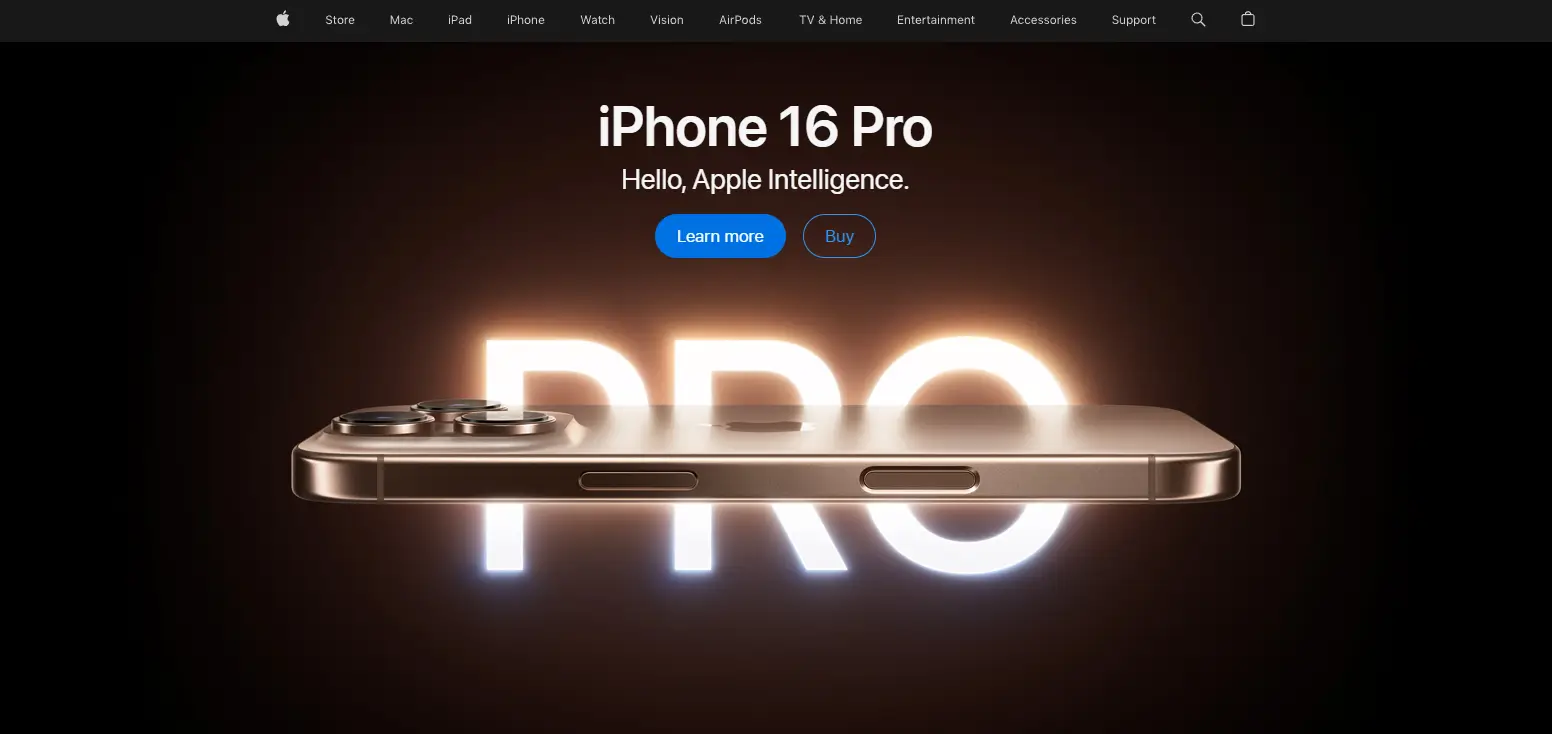
As a pioneer in retail innovation, Apple faced the challenge of integrating its various touchpoints to deliver a unified experience. Customers often begin their journey online by researching products and reading reviews before visiting a physical store for hands-on interaction. Apple’s goal was to ensure that transitions between these channels were smooth, convenient, and aligned with its core value of simplicity.
Omnichannel Optimizations
Apple implemented a series of targeted omnichannel optimization strategies to enhance customer satisfaction and streamline its operations.
First, Apple created a consistent experience across its online store, mobile app, and physical Apple Stores. The design, functionality, and messaging on these platforms were meticulously aligned to ensure that customers encountered a cohesive brand identity regardless of the channel they used. For example, a customer researching a MacBook on the website could seamlessly transition to the mobile app to compare specifications or complete a purchase. Upon visiting an Apple Store, the same customer would find the in-store environment designed to reflect the same clean, user-friendly aesthetic as the digital platforms. This consistency reinforced Apple’s brand values and created a sense of familiarity that enhanced the customer journey.
Second, Apple incorporated features that bridged digital and physical channels, making transitions between them effortless. One standout feature was the in-store pickup option, which allowed customers to purchase products online and collect them at their nearest Apple Store. This service catered to customers who valued the immediacy of in-store purchases while still enjoying the convenience of online shopping. Another innovative feature was the integration of Genius Bar appointments into Apple’s digital platforms. Customers could book appointments online or through the app, ensuring they received personalized technical support without waiting in long queues. These features emphasized Apple’s commitment to convenience and personalized service, hallmarks of effective omnichannel optimization.
Analysis and Evaluation
Apple’s omnichannel optimization strategies delivered significant benefits for both the company and its customers, reinforcing its reputation as a leader in customer experience.
By creating a consistent experience across online, mobile, and physical channels, Apple eliminated the friction often associated with multi-channel interactions. Customers could transition seamlessly between researching, purchasing, and receiving support, enhancing their overall satisfaction. This alignment also strengthened Apple’s brand image, as the unified approach reflected its core values of simplicity and innovation.
The inclusion of in-store pickup and Genius Bar appointments further elevated the customer experience. In-store pickup provided a practical solution for customers who needed immediate access to their purchases while maintaining the efficiency of online ordering. Genius Bar appointments booked online ensured that technical support was personalized and time-efficient, fostering greater loyalty among customers who valued premium service.
From an operational perspective, Apple’s omnichannel optimization efforts streamlined inventory management and improved resource allocation. The in-store pickup feature allowed Apple to optimize stock distribution across its physical stores, ensuring high-demand products were available where needed. Similarly, the ability to book Genius Bar appointments online reduced wait times and improved the utilization of support staff, enhancing overall efficiency.
Apple’s success in omnichannel optimization highlights the importance of aligning brand identity with customer experience across all touchpoints. By prioritizing consistency, convenience, and personalization, Apple demonstrated how a well-executed omnichannel strategy could drive customer satisfaction, operational efficiency, and long-term brand loyalty. This case study underscores the transformative potential of omnichannel optimization in delivering exceptional customer experiences that set a brand apart in a competitive market.
Tools and Technologies for Omnichannel Optimization
Omnichannel optimization thrives on the effective use of technology to streamline operations, enhance personalization, and improve responsiveness. In a world where customers demand seamless, integrated experiences across platforms, businesses must adopt advanced tools that enable them to meet these expectations. These tools not only facilitate smoother interactions but also help businesses make data-driven decisions, optimize resource allocation, and maintain a competitive edge. Below are some of the most impactful technologies driving omnichannel optimization, each playing a critical role in delivering efficient and engaging customer experiences.
Analytics Platforms
Analytics platforms form the backbone of omnichannel optimization by providing insights into customer behavior, channel performance, and operational efficiency. These platforms help businesses collect, interpret, and act on vast amounts of data.
- Tools like Google Analytics and Tableau for Insights: Google Analytics is invaluable for understanding how customers engage with online channels. It provides detailed data on metrics such as website traffic, user demographics, and conversion rates. For example, businesses can identify which pages have the highest bounce rates and optimize them to improve customer retention. Tableau, on the other hand, specializes in visualizing complex datasets. It helps businesses identify trends and correlations by presenting data in intuitive, interactive dashboards. With these tools, companies can pinpoint opportunities for improvement and track the effectiveness of their omnichannel optimization efforts.
- Dashboards for Real-Time Performance Tracking: Real-time analytics dashboards are critical for businesses operating across multiple channels. These dashboards consolidate metrics such as inventory levels, website activity, and in-store foot traffic, providing a holistic view of operations. For instance, if an online campaign drives unexpected demand for a product, the dashboard can alert the team to allocate additional inventory to high-demand regions. This immediate visibility empowers businesses to make quick, informed decisions, ensuring seamless experiences for customers across all touchpoints.
CRM Systems
Customer Relationship Management (CRM) systems are essential for unifying customer data and fostering personalized engagement. These tools ensure that businesses can consistently meet customer needs, regardless of the channel used.

- Salesforce and HubSpot for Unified Customer Data: Salesforce and HubSpot excel at consolidating customer information, including purchase histories, communication logs, and preferences. This centralization ensures all departments—sales, marketing, and customer support—have access to the same accurate, real-time data. For example, a sales representative can view a customer’s interaction history before making a pitch, ensuring the conversation is tailored to their needs and preferences.
- Enabling Personalized Communication and Segmentation: CRM systems make customer segmentation more precise and actionable. By categorizing customers based on their behavior, demographics, and past interactions, businesses can craft targeted marketing campaigns. For instance, a frequent online shopper might receive email promotions, while a store visitor could get personalized in-store discounts. This tailored approach enhances engagement and builds stronger customer relationships.
Marketing Automation Software
Marketing automation platforms are crucial for managing omnichannel campaigns efficiently and effectively. These tools allow businesses to deliver the right message to the right audience at the right time.
- Platforms Like Klaviyo for Omnichannel Campaigns: Klaviyo enables businesses to create and execute campaigns across multiple channels, including email, SMS, and social media. Its integration with other systems ensures consistent messaging, a key element of successful omnichannel optimization. For example, a campaign promoting a new product can simultaneously target customers via email and social ads, ensuring maximum reach and impact.
- Enhancing Engagement with Triggered Messages: Automation tools excel at sending messages triggered by specific customer actions. If a customer abandons their cart online, the system can automatically send a reminder email with a personalized discount code. Similarly, birthday greetings or loyalty program updates can be sent at the right moment, enhancing customer satisfaction and encouraging repeat purchases.
Inventory and Order Management Systems
Efficient inventory and order management are vital for omnichannel optimization, ensuring customers experience consistent availability and reliable fulfillment.
- Shopify and NetSuite for Seamless Inventory Tracking: Shopify and NetSuite provide robust inventory management systems that synchronize stock levels across warehouses, stores, and online platforms. This real-time synchronization ensures customers always see accurate stock availability, reducing the frustration of placing an order only to discover the item is out of stock.
- Tools to Sync Warehouse, Store, and Online Stock: These tools optimize inventory allocation and minimize inefficiencies. For example, if a product is selling faster in one region, the system can recommend transferring stock from a slower-performing area to meet demand. This capability not only improves customer satisfaction but also prevents overstocking, reducing storage costs.
AI-Driven Solutions
Artificial intelligence has become a cornerstone of omnichannel optimization, enabling businesses to enhance personalization, predict trends, and improve operational efficiency.
- Chatbots for Instant Customer Support: AI-powered chatbots provide 24/7 customer support across multiple channels, from websites to social media platforms. These chatbots can answer frequently asked questions, assist with order tracking, and even resolve basic issues without human intervention. For example, a customer seeking delivery updates can interact with a chatbot that accesses real-time logistics data, providing immediate answers and improving satisfaction.
- Predictive Analytics for Forecasting Demand: Predictive analytics tools use historical data to forecast customer demand and behavior. Businesses can use these insights to prepare for peak seasons, optimize marketing campaigns, and allocate resources efficiently. For instance, a retailer might use predictive analytics to stock more winter clothing in colder regions based on past trends, ensuring readiness to meet customer expectations.

By incorporating these tools and technologies into their strategies, businesses can achieve seamless and efficient omnichannel optimization. From real-time analytics and CRM systems to AI-driven insights, these solutions empower companies to deliver personalized, consistent, and engaging experiences across all touchpoints. This integration of technology not only enhances customer satisfaction but also drives operational efficiency, making it an indispensable part of modern business strategy.
Metrics to Measure Omnichannel Optimization Success
Measuring the success of omnichannel optimization requires analyzing performance across multiple dimensions. From customer satisfaction and retention to operational efficiency and marketing impact, the right metrics provide valuable insights into how well an omnichannel strategy is working. Below, we dive into the critical metrics businesses should monitor to evaluate and enhance their omnichannel optimization efforts.
Customer Metrics
Customer metrics help gauge how well your omnichannel optimization strategy resonates with your audience. These metrics focus on satisfaction, loyalty, and engagement, offering insights into how effectively you are meeting customer expectations.
Customer Satisfaction Score (CSAT) and Net Promoter Score (NPS)
Customer satisfaction score (CSAT) measures how happy customers are with a specific interaction or overall experience. By asking customers to rate their satisfaction, businesses can identify which aspects of their omnichannel strategy are excelling and where improvements are needed. For example, CSAT can highlight whether customers are satisfied with the seamless transition between online and in-store experiences.
Net Promoter Score (NPS), on the other hand, measures customer loyalty and their likelihood of recommending the brand to others. A high NPS reflects positive experiences across touchpoints, such as consistent service, intuitive navigation, and personalized interactions. Monitoring NPS over time helps businesses understand how omnichannel optimization contributes to long-term customer loyalty.
Retention and Churn Rates
Retention and churn rates provide critical insights into customer loyalty and satisfaction over time. Retention rate measures the percentage of customers who continue to engage with the brand, reflecting the success of omnichannel optimization in meeting their needs. For instance, customers who find it easy to shop across multiple channels are more likely to remain loyal.

Churn rate tracks the percentage of customers who stop interacting with the brand. A rising churn rate may indicate pain points in the customer journey, such as inconsistent experiences or slow response times. By analyzing these metrics, businesses can identify issues and refine their omnichannel strategies to improve customer retention.
Revenue and Sales Metrics
Revenue and sales metrics are essential for understanding the financial impact of omnichannel optimization. These metrics highlight how customer behavior translates into revenue growth.
Average Order Value (AOV) and Conversion Rates
Average order value (AOV) measures the average amount customers spend per transaction. A successful omnichannel optimization strategy often leads to increased AOV by encouraging customers to explore complementary products across channels. For example, a customer browsing online may be prompted with recommendations to purchase matching accessories, boosting the overall transaction value.
Conversion rates track the percentage of customers who complete a desired action, such as making a purchase. High conversion rates indicate that the omnichannel strategy effectively guides customers through the sales funnel. For instance, offering real-time stock updates and personalized promotions can reduce friction and increase the likelihood of completing a sale.
Impact of Cross-Selling and Upselling Strategies
Omnichannel optimization enables targeted cross-selling and upselling efforts. Cross-selling involves recommending related products, while upselling encourages customers to choose premium options. Metrics tracking these strategies show how well businesses leverage omnichannel tools to enhance revenue.

For example, a customer purchasing a smartphone online might receive suggestions for a compatible case and screen protector. Similarly, in-store associates equipped with customer data can recommend higher-tier products tailored to the customer’s preferences. These strategies not only increase revenue but also improve the customer experience by anticipating their needs.
Operational Efficiency Metrics
Operational efficiency metrics evaluate how well a business manages its resources and processes to support an omnichannel strategy. These metrics focus on logistics, inventory, and error reduction.
Fulfillment Speed and Error Rates
Fulfillment speed measures the time it takes to process and deliver orders. Faster fulfillment, enabled by integrated inventory and order management systems, is a hallmark of successful omnichannel optimization. For example, offering options like same-day delivery or in-store pickup demonstrates agility and responsiveness.

Error rates assess the accuracy of order fulfillment, including incorrect shipments or delayed deliveries. Low error rates reflect efficient backend operations and a well-synchronized omnichannel system. Customers who receive the right products on time are more likely to trust and continue engaging with the brand.
Inventory Turnover and Stock Accuracy
Inventory turnover measures how quickly inventory is sold and replenished. High turnover rates indicate that the omnichannel strategy effectively aligns inventory levels with customer demand. For instance, predictive analytics can help allocate popular products to regions where demand is highest.
Stock accuracy tracks the consistency between recorded inventory levels and actual stock. Accurate inventory ensures that customers receive up-to-date information about product availability, reducing frustrations associated with stockouts. Businesses that maintain accurate stock data are better equipped to meet customer expectations, a critical aspect of omnichannel optimization.
Marketing Performance Metrics
Marketing metrics evaluate how well campaigns perform in driving engagement, conversions, and long-term customer value within an omnichannel framework.
Return on Marketing Investment (ROMI)
Return on marketing investment (ROMI) calculates the revenue generated for every dollar spent on marketing. High ROMI indicates that omnichannel campaigns are reaching the right audiences and driving meaningful engagement. For example, an integrated campaign that includes personalized emails, targeted social ads, and in-store promotions can maximize reach and conversion potential.

Analyzing ROMI allows businesses to refine their marketing strategies, allocating resources to the most effective channels and tactics. This ensures that every marketing dollar contributes to the success of the omnichannel strategy.
Customer Acquisition and Lifetime Value (CLV)
Customer acquisition measures the cost and efficiency of attracting new customers. Lower acquisition costs paired with high conversion rates suggest that the omnichannel strategy is resonating with potential buyers. For instance, a well-executed social media campaign that drives traffic to both online and physical stores demonstrates effective omnichannel alignment.
Customer lifetime value (CLV) estimates the total revenue a customer will generate over their lifetime. Higher CLV reflects the success of omnichannel optimization in fostering loyalty and repeat purchases. Personalized experiences and seamless transitions between channels encourage customers to engage more frequently and spend more over time, increasing overall value
Challenges in Omnichannel Optimization
While omnichannel optimization offers immense benefits, implementing a seamless strategy comes with its fair share of challenges. Businesses face operational, customer behavior, and technical hurdles that can complicate their efforts to provide consistent and engaging experiences across multiple touchpoints. Understanding these challenges is essential for addressing them effectively and achieving a truly optimized omnichannel system.
Operational Challenges
Operational challenges are among the most significant obstacles to successful omnichannel optimization. They often involve logistical complexities and inefficiencies that hinder the smooth alignment of channels.
Data Silos and Lack of Integration
Data silos occur when customer and operational information is stored in separate systems that do not communicate effectively. This lack of integration prevents businesses from gaining a unified view of their customers, which is critical for omnichannel optimization. For instance, a customer’s online purchase history may not be accessible to in-store associates, resulting in missed opportunities for personalized service.
To overcome this challenge, businesses must invest in integrated systems, such as customer relationship management (CRM) platforms, that centralize data from all channels. Breaking down silos enables companies to create a holistic customer profile, facilitating consistent interactions and personalized recommendations. However, achieving this level of integration requires significant resources and careful planning to ensure all systems work seamlessly together.
Managing Inventory Across Channels
Managing inventory across online, in-store, and warehouse channels is another operational hurdle. Discrepancies in stock levels or delayed updates can lead to stockouts, overstocking, or miscommunication with customers. For example, a customer might order an item online only to be informed later that it is out of stock, damaging their trust in the brand.
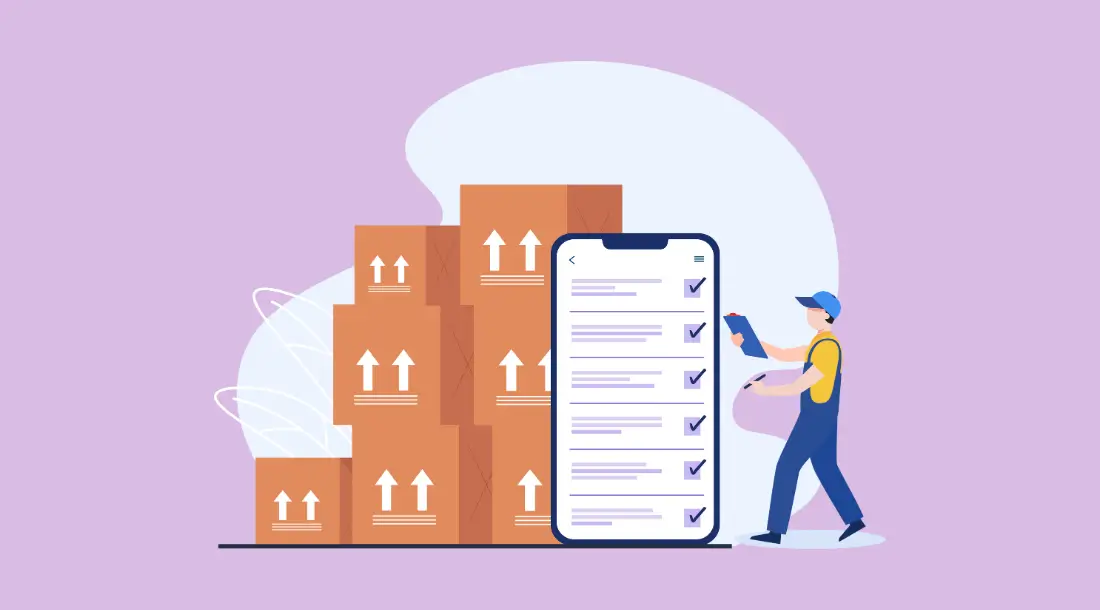
Omnichannel optimization demands real-time inventory management systems that synchronize stock levels across all touchpoints. These systems ensure that customers always have accurate information about product availability, whether shopping online or in-store. Implementing such solutions requires not only advanced technology but also streamlined processes to maintain accuracy and efficiency.
Customer Behavior Challenges
Customer behavior is constantly evolving, presenting challenges for businesses trying to keep pace. Successfully addressing these challenges is critical for maintaining customer satisfaction and loyalty.
Changing Expectations and Preferences
Modern customers expect seamless, personalized, and flexible experiences, which can be difficult for businesses to deliver consistently. Expectations around convenience, such as fast shipping or easy returns, are higher than ever, and customers are quick to switch brands if their needs are not met.
To navigate this challenge, businesses must adopt agile omnichannel optimization strategies that respond quickly to shifts in customer behavior. This involves leveraging data analytics to monitor trends, predict changes, and adapt offerings accordingly. For example, a retailer might implement same-day delivery or curbside pickup options to meet growing demand for convenience.
Addressing Personalized Needs at Scale
Delivering personalized experiences across a large customer base is another significant challenge. Customers increasingly expect interactions tailored to their preferences, from product recommendations to marketing messages. However, achieving this level of personalization at scale can strain resources and technology.

Omnichannel optimization requires advanced tools, such as artificial intelligence (AI) and machine learning, to analyze customer data and automate personalization efforts. For instance, AI-driven systems can segment customers based on their shopping habits and deliver targeted promotions to each group. While these technologies offer powerful solutions, they also demand substantial investment and expertise to implement effectively.
Technical Challenges
Technical challenges often arise from the complexity of integrating multiple systems and ensuring real-time synchronization. These issues can undermine the efficiency and reliability of an omnichannel strategy.
Complexity in System Integrations
Integrating disparate systems, such as eCommerce platforms, inventory management tools, and point-of-sale (POS) systems, is a complex process. Each system may have different protocols, data formats, and requirements, making seamless integration a daunting task. Without proper integration, businesses risk operational inefficiencies and data inconsistencies that can disrupt the customer experience.

To address this challenge, businesses need robust middleware solutions or application programming interfaces (APIs) that facilitate communication between systems. Additionally, careful planning and collaboration with technology providers are essential to ensure smooth implementation. While the process can be resource-intensive, the benefits of an integrated omnichannel system far outweigh the initial investment.
Ensuring Real-Time Updates Across Platforms
Real-time updates are critical for maintaining accuracy and consistency across channels. Whether it’s inventory levels, order statuses, or customer profiles, delays in updates can lead to poor customer experiences and operational inefficiencies. For example, a customer might see an item marked as available online, only to find it sold out when they attempt to purchase it in-store.

Achieving real-time synchronization requires advanced technology infrastructure, such as cloud-based systems, that enable instantaneous data sharing. Businesses must also implement robust monitoring and maintenance processes to ensure system reliability. While these measures demand ongoing investment, they are essential for delivering the seamless experiences that omnichannel optimization promises.
Common Mistakes to Avoid in Omnichannel Optimization
Omnichannel optimization has the potential to transform customer experiences and drive business growth, but its implementation is not without challenges. Many businesses fall into common pitfalls that can derail their strategies and undermine their efforts. Avoiding these mistakes is essential to ensure the success of an omnichannel approach. Below, we explore some of the most frequent errors and how to address them effectively.
Neglecting Mobile Optimization
Mobile devices have become a primary touchpoint for customers, making mobile optimization a critical aspect of omnichannel optimization. Yet, many businesses overlook this channel, resulting in missed opportunities and diminished customer satisfaction.
Poor Mobile Site Performance or Lack of Mobile Apps
A slow, unresponsive mobile site or the absence of a dedicated mobile app can frustrate users and drive them away. Customers expect fast load times, intuitive navigation, and seamless functionality on their smartphones. For instance, if a customer browsing an eCommerce site experiences lags or crashes, they are likely to abandon their session and seek alternatives.
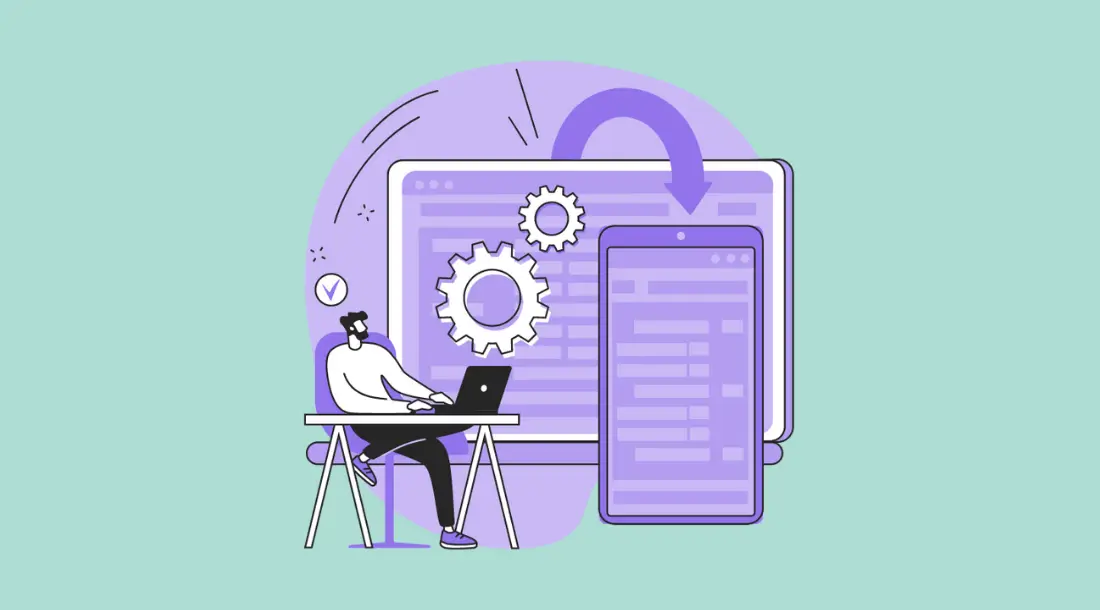
To address this, businesses must prioritize mobile-first design principles and invest in optimizing their mobile websites and apps. Features such as one-click checkout, mobile-friendly layouts, and real-time updates can significantly enhance the user experience. Additionally, businesses should regularly test their mobile platforms to identify and resolve performance issues proactively.
Missing Opportunities in Mobile-First Markets
In regions where mobile usage dominates, neglecting mobile optimization can mean losing out on a significant customer base. Emerging markets, in particular, are often mobile-first, with consumers relying heavily on smartphones for browsing, shopping, and communication.
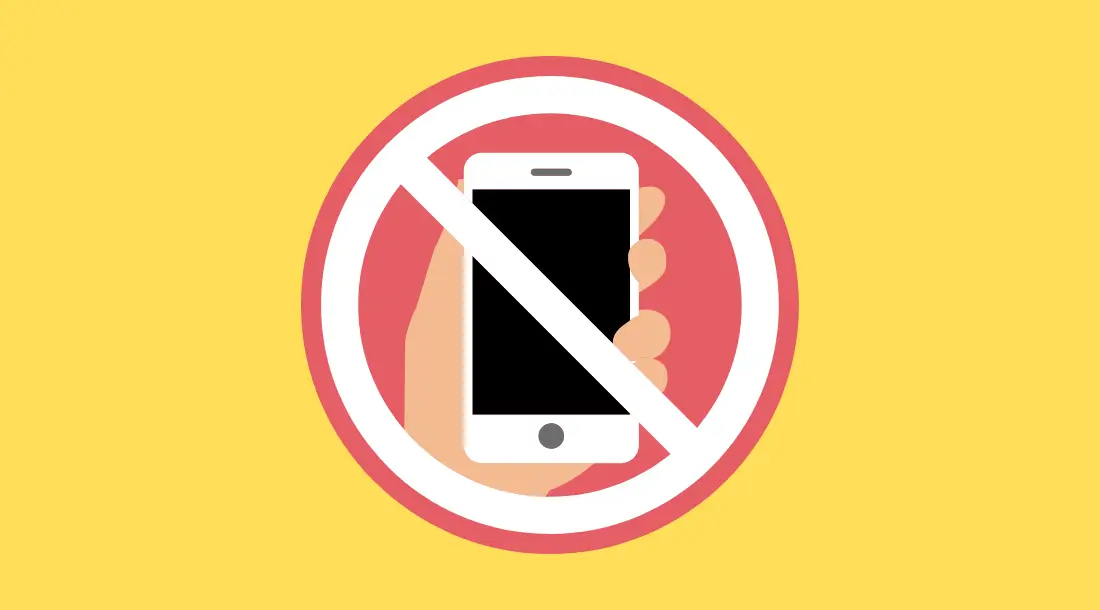
To capitalize on these opportunities, businesses must tailor their omnichannel optimization strategies to cater specifically to mobile-first customers. This includes offering localized apps, supporting mobile payment options, and leveraging mobile marketing tactics like SMS campaigns and in-app notifications. Such efforts can help businesses tap into underserved markets and expand their reach.
Underestimating Employee Training Needs
A well-designed omnichannel strategy is only as effective as the employees implementing it. Businesses often overlook the importance of training their staff, leading to inconsistencies in customer interactions and underutilization of technology.
Lack of Training Leading to Inconsistent Customer Experiences
Without proper training, employees may struggle to deliver the seamless, cohesive experiences that omnichannel optimization aims to achieve. For example, an in-store associate unfamiliar with the brand’s online offerings might be unable to assist a customer looking to pick up an online order. This disconnect can frustrate customers and diminish their trust in the brand.
To avoid this, businesses should implement comprehensive training programs that educate employees about the omnichannel strategy and their role in its success. Regular workshops, role-playing exercises, and access to digital resources can ensure that staff are equipped to provide consistent service across all channels.
Misuse of Technology Due to Insufficient Knowledge
Advanced tools like CRM systems, inventory management platforms, and analytics dashboards require a certain level of expertise to operate effectively. When employees lack the necessary skills, these technologies can be underutilized or misapplied, reducing their impact on omnichannel optimization.

Businesses must prioritize hands-on training and ongoing support to help employees harness the full potential of these tools. This includes offering tutorials, creating user guides, and providing access to technical support teams. Well-trained employees are more confident and capable, which directly enhances the overall customer experience.
Overlooking Data Privacy Regulations
Data is the lifeblood of omnichannel optimization, but mishandling it can have serious legal and reputational consequences. Failing to comply with data privacy regulations is a common mistake that businesses cannot afford to make.
Non-Compliance with Laws Like GDPR
Regulations such as the General Data Protection Regulation (GDPR) and California Consumer Privacy Act (CCPA) impose strict requirements on how businesses collect, store, and use customer data. Non-compliance can result in hefty fines and legal action, as well as damage to the brand’s reputation.
To ensure compliance, businesses must implement robust data governance policies and invest in secure data management systems. Regular audits, employee training, and transparent communication with customers about data usage are essential steps in maintaining compliance and building trust.
Risks of Customer Mistrust Due to Data Breaches
A single data breach can erode customer trust and tarnish a brand’s reputation. If customers feel their information is not secure, they are less likely to engage with the brand or share personal details.

To mitigate this risk, businesses must prioritize cybersecurity as part of their omnichannel optimization strategy. This includes encrypting sensitive data, using multi-factor authentication, and regularly updating systems to address vulnerabilities. Building a reputation for strong data security can serve as a competitive advantage in gaining and retaining customer trust.
Failing to Iterate Continuously
Omnichannel optimization is not a one-time project but an ongoing process that requires regular updates and refinements. Stagnation in strategies can lead to inefficiencies and a loss of relevance in a competitive market.
Stagnation in Strategies Results in a Loss of Competitive Edge
Customer preferences and technologies are constantly changing, and businesses that fail to adapt risk falling behind. For example, a strategy that worked five years ago may no longer resonate with today’s tech-savvy customers who demand hyper-personalization and instant gratification.
To stay competitive, businesses must adopt a mindset of continuous improvement. This involves monitoring customer feedback, tracking performance metrics, and staying informed about industry trends. Regularly iterating on the omnichannel strategy ensures that it remains effective and aligned with evolving customer needs.
Neglecting Regular Updates
Outdated technology and processes can create bottlenecks and inefficiencies that hinder omnichannel optimization efforts. For instance, an aging inventory management system may struggle to synchronize stock levels across channels, resulting in inaccurate data and frustrated customers.
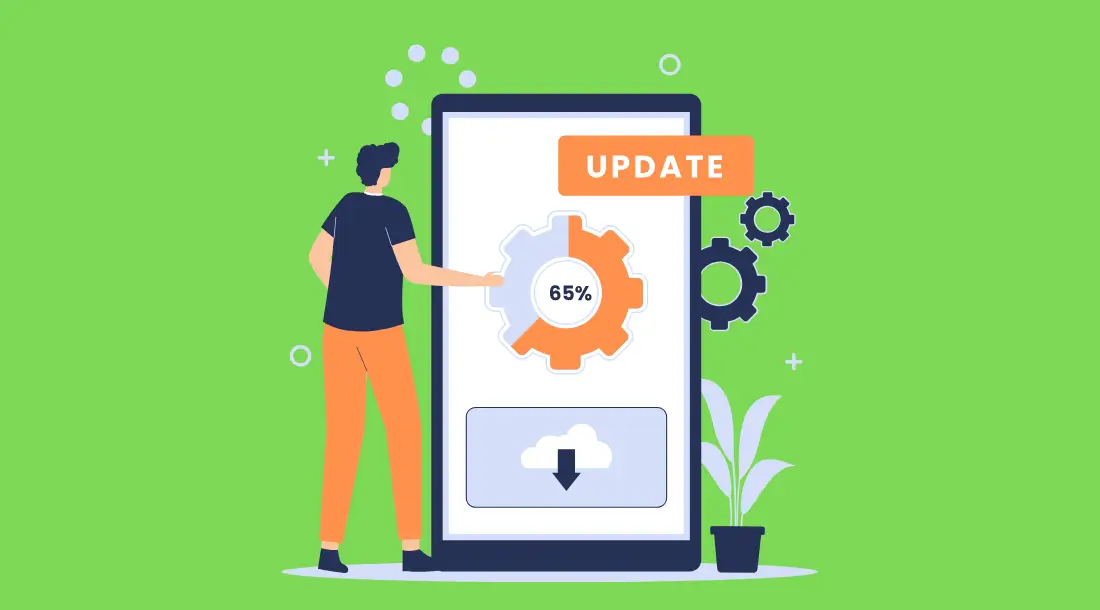
Businesses must prioritize regular system updates and invest in scalable technologies that can grow with their needs. Proactively identifying and addressing inefficiencies ensures that the omnichannel strategy remains robust and capable of driving growth.
Best Practices in Omnichannel Optimization
Implementing effective omnichannel optimization requires a thoughtful approach that combines strategic consistency, customer-centric practices, and a commitment to innovation. By following best practices, businesses can create a cohesive and engaging customer experience across all touchpoints, driving loyalty and growth. Below are the key strategies that successful brands employ to optimize their omnichannel efforts.
Consistency Across Channels
Consistency is the foundation of omnichannel optimization. Customers expect a seamless and unified experience across all channels, from websites to physical stores. Discrepancies can lead to confusion and erode trust in the brand.
Ensure Branding, Messaging, and Design Uniformity
Maintaining consistent branding, messaging, and design across all channels reinforces the brand’s identity and builds customer trust. For instance, a customer who encounters the same visual elements and tone of voice on a website, mobile app, and social media will perceive the brand as professional and reliable.

To achieve this, businesses should develop comprehensive brand guidelines that cover visual elements, such as logos, color schemes, and typography, as well as messaging standards. Regular audits of all platforms ensure alignment and prevent inconsistencies that might confuse customers or dilute the brand’s impact.
Avoid Discrepancies in Pricing, Promotions, or Policies
Inconsistent pricing, promotions, or policies across channels can frustrate customers and discourage them from making purchases. For example, if an item is on sale online but not in-store, it can lead to dissatisfaction and perceptions of unfair treatment.

Businesses should synchronize their pricing, promotional campaigns, and return policies across all platforms. Technology solutions like integrated inventory and pricing management systems can help maintain uniformity and ensure customers experience consistency regardless of how they interact with the brand.
Leverage Data-Driven Insights
Data is a powerful tool for omnichannel optimization, providing businesses with valuable insights into customer behavior and preferences. Leveraging this data allows for more effective decision-making and personalized experiences.
Analyze Customer Behavior to Predict Future Trends
Understanding how customers interact with different channels helps businesses anticipate future needs and adapt their strategies accordingly. For instance, analyzing purchase patterns can reveal seasonal trends, enabling brands to stock popular items in advance and tailor marketing campaigns.
Advanced analytics tools can identify these patterns by combining data from various touchpoints, such as website visits, app usage, and in-store purchases. Predictive analytics takes this a step further by forecasting trends, allowing businesses to stay ahead of customer demands and market shifts.
Utilize Data to Personalize Communication and Offers
Personalization is a key driver of customer satisfaction and loyalty. Businesses can use data to segment customers based on demographics, preferences, and behaviors, creating targeted campaigns and offers that resonate with specific groups.
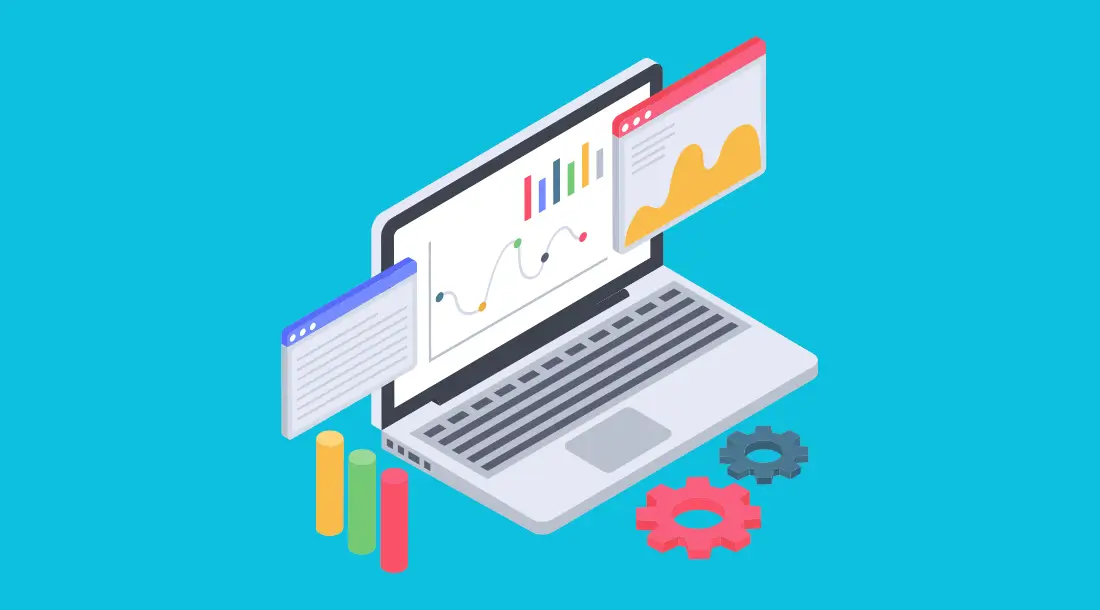
For example, a customer who frequently shops for athletic wear might receive personalized promotions for new sports apparel collections. By tailoring communication and offers, businesses enhance engagement and demonstrate a deep understanding of their customers’ needs.
Deliver Seamless Cross-Channel Experiences
A hallmark of effective omnichannel optimization is the ability to provide seamless transitions between channels, ensuring customers can engage with the brand effortlessly.
Enable Easy Transitions Between Online and Offline Channels
Customers often begin their journey online and complete it in-store, or vice versa. Facilitating these transitions is critical for delivering a smooth experience. For example, online shopping carts should sync with in-store systems, allowing customers to pick up where they left off regardless of the channel they choose.
Integrating digital and physical touchpoints requires robust technology infrastructure, such as cloud-based systems and unified databases. This ensures consistency and eliminates friction, making it easier for customers to interact with the brand.
Provide Features Like BOPIS (Buy Online, Pick Up In-Store)
BOPIS has become a popular feature for its convenience and efficiency. Customers can browse and purchase items online and then pick them up at a nearby store, saving time and avoiding shipping fees. This feature not only enhances the shopping experience but also drives foot traffic to physical stores.
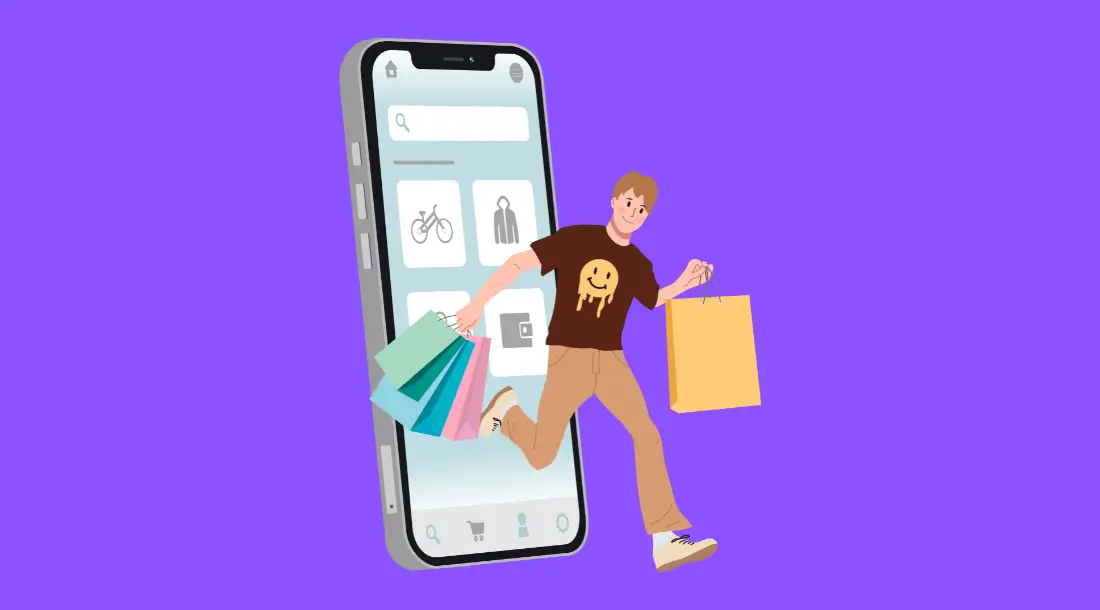
Implementing BOPIS requires real-time inventory management and streamlined processes to ensure items are ready for pickup promptly. When executed well, this feature strengthens the connection between online and offline channels, a key aspect of omnichannel optimization.
Proactively Engage Customers
Engaging customers at the right time and through the right channels is essential for building relationships and encouraging repeat business.
Use Automated Tools to Send Timely Notifications and Reminders
Automation tools enable businesses to stay connected with customers through timely and relevant communications. For instance, automated cart abandonment emails can remind customers of items left in their cart, often with incentives to complete the purchase.
Notifications about upcoming sales, order status updates, and personalized recommendations also keep customers engaged. These proactive efforts demonstrate attentiveness and encourage ongoing interaction with the brand.
Offer Loyalty Programs That Reward Multi-Channel Interactions
Loyalty programs incentivize repeat purchases and deeper engagement. By rewarding customers for interacting across multiple channels—such as shopping online, visiting stores, and using mobile apps—businesses can strengthen their omnichannel strategy.

For example, a points-based program that tracks purchases across all touchpoints can encourage customers to explore various channels while enjoying consistent rewards. Such programs enhance brand loyalty and drive long-term value.
Stay Agile and Innovative
In a fast-evolving market, agility and innovation are critical for maintaining a competitive edge and meeting changing customer expectations.
Quickly Adapt to Market Changes and Customer Feedback
Customer preferences and market conditions can shift rapidly, requiring businesses to respond with speed and flexibility. Regularly analyzing feedback and performance metrics allows brands to identify areas for improvement and refine their strategies.
For instance, if customers express frustration with long delivery times, businesses can explore faster shipping options or local fulfillment centers. Agility in addressing such pain points strengthens customer trust and satisfaction.
Experiment with Emerging Technologies Like AR/VR
Innovative technologies like augmented reality (AR) and virtual reality (VR) are reshaping customer experiences. AR can allow customers to visualize products in their space, such as placing virtual furniture in their home before purchase. VR can offer immersive experiences, such as virtual store tours or product demonstrations.

By experimenting with these technologies, businesses can differentiate themselves and deliver cutting-edge experiences that captivate customers. Investing in innovation ensures that the omnichannel strategy remains fresh and competitive.
Conclusion
Omnichannel optimization has become a cornerstone of modern business strategy, offering unparalleled opportunities to enhance customer experiences and drive sustainable growth. Throughout this blog post, we’ve explored the complexities and potential of omnichannel optimization, from addressing challenges and avoiding common pitfalls to implementing effective strategies and fostering an omnichannel-first culture.
The journey toward seamless omnichannel optimization begins with overcoming significant challenges, such as data silos, evolving customer expectations, and technical complexities. Businesses must navigate these obstacles by embracing robust integration systems, customer-centric workflows, and advanced technologies like AI-driven analytics and real-time data synchronization. Addressing these challenges lays the foundation for a cohesive and efficient omnichannel strategy.
Implementing best practices is equally crucial. Strategies such as ensuring consistency across channels, leveraging data-driven insights, and delivering seamless cross-channel experiences help businesses provide the uniformity and personalization customers demand. Moreover, proactive customer engagement and a commitment to innovation enable organizations to stay competitive in an ever-changing market landscape. These practices not only enhance operational efficiency but also build trust and loyalty among customers.
At the core of successful omnichannel optimization is a willingness to embrace continuous innovation. Customer preferences, market conditions, and technological advancements are constantly evolving. Businesses that adapt quickly to these changes will maintain their competitive edge. This requires ongoing experimentation with emerging tools like augmented reality, regular updates to processes and systems, and an organizational culture that values agility and creativity.
As we conclude this comprehensive discussion on omnichannel optimization, we encourage businesses to assess their current strategies. Identifying strengths and gaps in existing omnichannel efforts is the first step toward building a more robust and customer-centric approach. Whether through enhanced employee training, better integration of data systems, or the introduction of innovative features, every step forward brings businesses closer to achieving true omnichannel optimization.
In today’s competitive landscape, where customer expectations continue to rise, investing in omnichannel optimization is not just a strategic advantage—it is a necessity. By embracing the challenges, leveraging the strategies, and committing to the best practices outlined in this blog post, businesses can deliver exceptional experiences that resonate with customers and drive long-term success.




